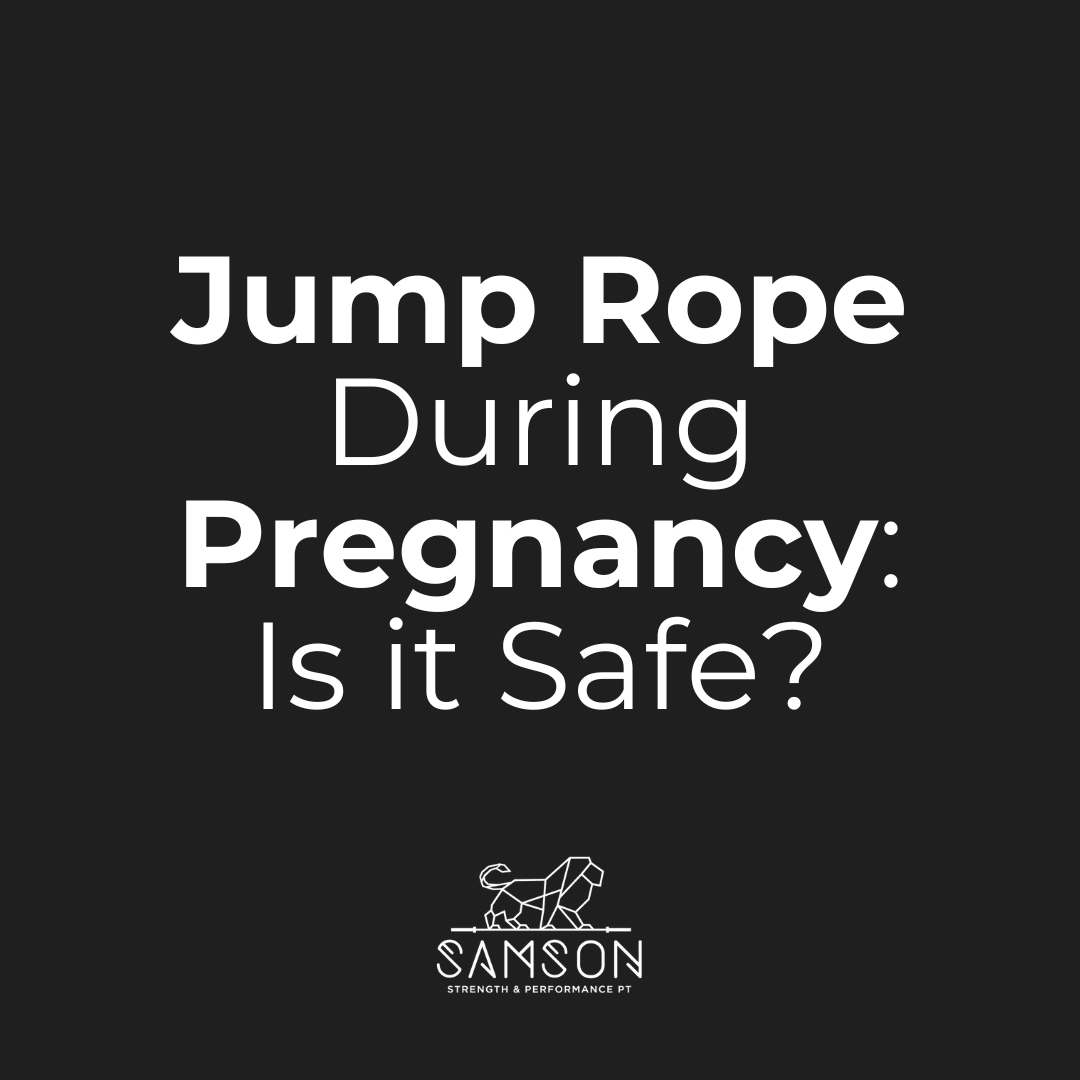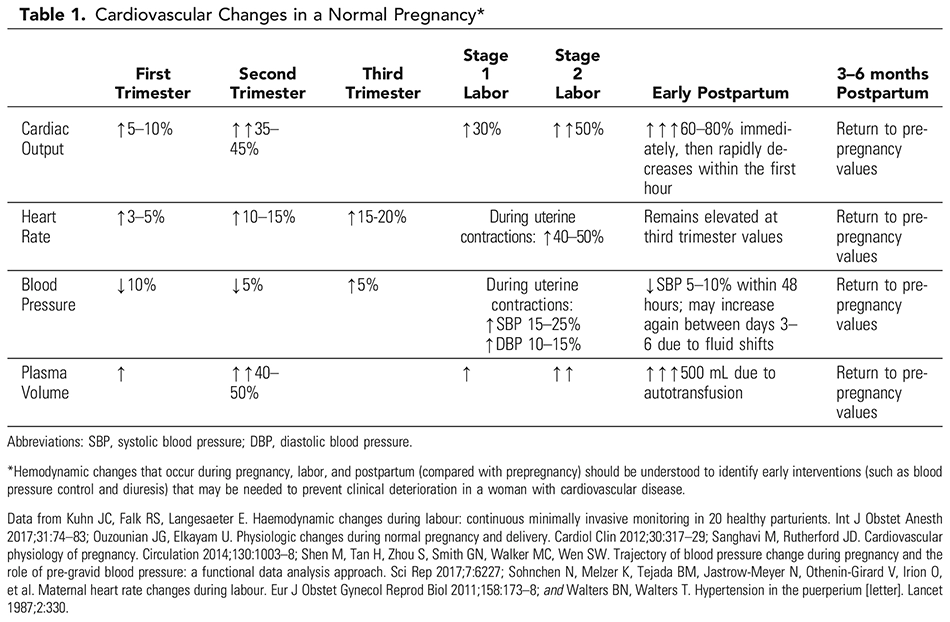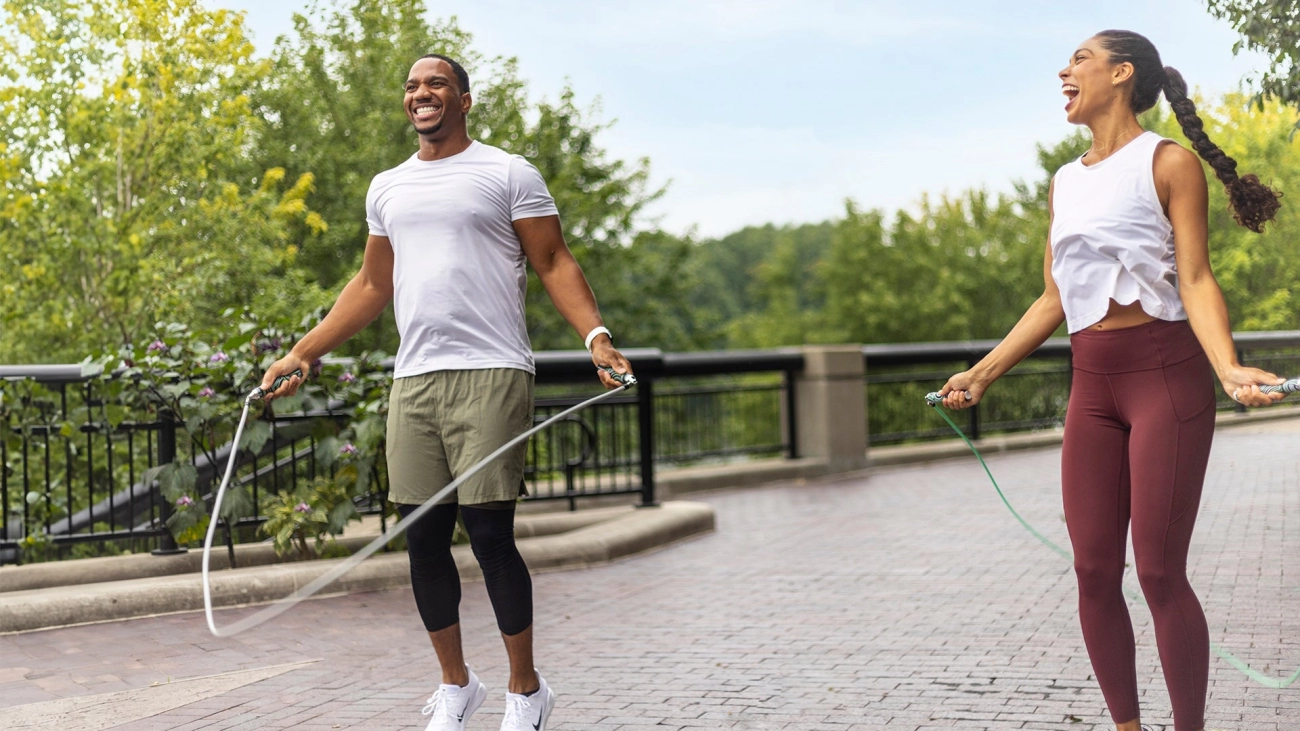Are you wondering, “Can you jump rope during pregnancy?” It’s a question many expectant moms ask, especially when looking for ways to stay active and healthy. Jump roping is a fantastic cardio workout—but is it safe when you’re pregnant?
In this post, we’ll cut through the confusion and give you clear, expert-backed answers about skipping rope during pregnancy. You’ll discover when it’s okay to jump, what precautions to take, and smarter alternatives if jump roping isn’t for you. Plus, we’ll share tips on choosing a jump rope that works best for your changing body.
If you want to stay fit without compromising safety, keep reading—this guide has everything you need to jump rope safely while expecting.
Exercise During Pregnancy Overview
Maintaining physical activity during pregnancy is highly recommended for both the mother’s and baby’s health. According to pregnancy exercise guidelines, most women can safely engage in moderate exercise throughout all trimesters unless advised otherwise by their healthcare provider. Regular movement helps reduce common pregnancy discomforts, improves mood, and supports a healthy weight gain.
Importance of Staying Active for Maternal Health
Exercise during pregnancy contributes to better cardiovascular health, reduced risk of gestational diabetes, and improved muscle tone. Staying active also helps prepare the body for labor and recovery postpartum. The American College of Obstetricians and Gynecologists (ACOG) suggests aiming for at least 150 minutes of moderate-intensity exercise per week, spread across several days.
How Pregnancy Affects the Body’s Balance Joints and Cardiovascular System
Pregnancy brings significant changes that impact exercise routines, including jump rope workouts. The body releases the hormone relaxin, which loosens ligaments, especially in the pelvis and joints, increasing flexibility but also the risk of injury. This can lead to joint instability and reduced balance, requiring extra caution during high-impact activities.
The cardiovascular system also adapts to pregnancy by increasing blood volume and heart rate to support the growing baby. While these changes generally enhance endurance, they may cause fatigue or shortness of breath during exercise, signaling the need to adjust intensity.
Key considerations for exercising safely during pregnancy:
- Prioritize low- to moderate-impact exercises
- Listen to your body for any signs of discomfort or dizziness
- Stay hydrated and avoid overheating
- Modify workouts as pregnancy progresses to accommodate physical changes
Understanding these factors helps in choosing safe and effective prenatal workouts, setting the foundation for exploring whether jump roping is a suitable option while pregnant.
Is Jump Roping Safe During Pregnancy

When it comes to jumping rope during pregnancy, expert opinions, including those from OB-GYNs and authoritative health organizations, tend to be cautious. Jump roping is a high-impact exercise that can place extra stress on the body’s joints and balance—both of which change significantly during pregnancy.
Expert Perspectives on Jump Roping While Pregnant
Most pregnancy exercise guidelines agree that staying active is important, but exercises involving high impact or risk of falling require careful consideration. OB-GYNs often advise pregnant women to avoid activities like jumping rope if they have not been regular exercisers before pregnancy or if their pregnancy comes with any complications.
Risks of Jumping Rope During Pregnancy
- Impact on joints and pelvic floor: Pregnancy loosens ligaments and affects joint stability, increasing the risk of injury with repetitive jumping.
- Balance challenges: Hormonal changes can impact your balance, making falls more likely while jumping rope.
- Fall risk: A sudden loss of balance can lead to falls, which pose risks to both mother and baby.
- Increased fatigue and dizziness: Pregnancy can cause tiredness and lightheadedness, which heightens risks during jump roping.
Which Trimesters Are Safer or Riskier for Jumping Rope
- First trimester: Generally, you might manage mild to moderate exercise, but nausea and fatigue may limit your ability to jump rope safely.
- Second trimester: Many women regain energy and better balance, so low-impact jump rope may be possible if approved by your healthcare provider.
- Third trimester: Usually riskier due to a bigger belly, shifts in your center of gravity, and greater instability. High-impact exercises like skipping should typically be avoided.
When to Avoid Jump Roping During Pregnancy
It’s generally recommended to avoid high-impact exercises like jump roping in these situations:
- If you experience any pregnancy complications such as bleeding, preterm contractions, or signs of preeclampsia.
- If you have a history of miscarriage, high-risk pregnancy, or placenta issues.
- If your healthcare provider advises against it based on your specific health status.
- If you feel unsteady, experience pain, dizziness, or shortness of breath during the exercise.
Jump roping can be a challenging workout to maintain safely during pregnancy. That’s why discussing your fitness routine with your OB-GYN is essential before continuing or starting jump rope workouts, especially considering the physical changes and risks each trimester brings.
Bottom line: Jump rope can be safe for some pregnant women in early to mid-pregnancy if done carefully, but it’s not usually recommended as a go-to exercise due to balance and impact risks. Always check with your doctor first to tailor your routine safely.
Benefits of Jump Roping for Pregnant Women Safe Cardio and Fitness
Jump rope can offer solid cardiovascular benefits during pregnancy when done safely and with the right precautions. It helps keep your heart rate up, which supports both your fitness and overall health as your body changes.
Maintaining Fitness Levels
Staying active with jump rope can be an effective way to maintain fitness without needing a gym. It’s a great way to keep your stamina and endurance steady, which can come in handy during labor and delivery. Regular movement like skipping promotes better circulation, reduces swelling, and can help prevent excessive weight gain.
Coordination and Muscle Toning
Jump roping works your core, legs, and arms, improving muscle tone and coordination. This is particularly useful during pregnancy because stronger muscles help support your body as it adjusts to shifting weight and posture. Improved balance and coordination also reduce the risk of falls, which is a concern as pregnancy progresses.
Stress Relief and Mood Improvement
Exercise like jumping rope releases endorphins—our natural mood boosters. This can make a big difference in managing the emotional ups and downs pregnancy can bring. For many expectant moms, gentle jumping rope sessions provide stress relief and an energy boost, which support mental well-being.
Keep in mind: The benefits only apply when jump roping is done with care, following pregnancy exercise guidelines. If you’re new to jumping rope or pregnant, it’s best to get the green light from your healthcare provider first.
Precautions and Safety Tips for Jump Roping During Pregnancy

Jump roping can be part of a healthy pregnancy exercise routine, but it’s important to prioritize safety. Here are key tips to help you jump rope safely while pregnant and avoid any unnecessary risks.
Wear Proper Footwear and Choose Flat Surfaces
- Always wear supportive, cushioned shoes designed for exercise to protect your joints.
- Pick a flat, non-slippery surface like a wooden floor or gym mat to lower your risk of falls. Avoid uneven or slippery ground entirely.
Listen to Your Body and Monitor Signals
- Pregnancy changes your balance, so pay close attention to dizziness, shortness of breath, or unusual pain during jump roping.
- Stop immediately if you feel any discomfort, vaginal bleeding, or unusual cramping.
- Don’t push through fatigue — reduce intensity or take breaks as needed to avoid overexertion.
Adjust Intensity and Duration
- Limit sessions to short intervals (5 to 10 minutes) at a time rather than long continuous jumping.
- Slow your pace and avoid aggressive jumping to reduce impact on joints and pelvic floor muscles.
- Keep your workouts moderate and avoid high-impact moves, especially after the first trimester when balance changes become more noticeable.
Warm Up and Cool Down
- Start with 5 minutes of light activity like walking or gentle stretches to warm up your muscles and joints.
- Finish your session with cool-down stretches to promote flexibility and reduce muscle tightness.
Stay Hydrated and Manage Temperature
- Pregnant women are more prone to overheating, so drink water before, during, and after jump roping.
- Avoid jumping in hot, humid environments; opt for a cool, well-ventilated space or workout indoors with fans or air conditioning.
By following these safety tips and keeping an eye on your body’s signals, jump roping can remain a fun and effective part of your prenatal fitness routine. Always consult your healthcare provider if you’re unsure about any exercise during pregnancy.
Alternative Pregnancy Safe Cardiovascular Exercises
When it comes to staying active during pregnancy, low-impact cardio exercises are often the safest and most recommended options. These activities help maintain fitness without putting too much strain on your joints or increasing the risk of falls.
Low Impact Cardio Options for Pregnancy
-
Walking
Easy to do anywhere, walking is gentle on your joints and helps improve circulation and cardiovascular health. It’s a great way to stay active without overexerting yourself.
-
Swimming
Swimming and water aerobics provide resistance training while supporting your weight. This reduces pressure on your hips, knees, and spine and helps with overall muscle toning and endurance.
-
Prenatal Yoga
Prenatal yoga focuses on flexibility, breathing, and relaxation. It’s excellent for stress relief and maintaining mobility, plus it supports better posture and balance during pregnancy.
-
Stationary Cycling
Using a stationary bike offers a controlled, low-impact way to boost cardiovascular fitness safely, especially during later pregnancy stages when outdoor biking may feel unstable.
Advantages Compared to Jump Rope
While jump roping can be a fun and effective workout, these alternatives generally provide lower impact on your joints and less risk of losing balance, which is crucial as pregnancy progresses and your center of gravity shifts. Low-impact exercises are less likely to cause trauma from impact or sudden movements, making them easier to manage for most pregnant women.
How to Incorporate Jump Rope Into a Balanced Pregnancy Routine
If you enjoy skipping rope and have your healthcare provider’s okay, here are some tips for blending jump roping with safer exercises:
- Use jump rope sessions as short, low-intensity intervals rather than long workouts.
- Combine with walking or stationary cycling to balance the workout with less impact activities.
- Always warm up with gentle stretches or prenatal yoga poses before jump roping.
- Pay attention to your body; if you feel dizzy, off-balance, or tired, switch to a safer alternative right away.
- Keep hydration and a comfortable pace in mind to avoid overheating or exhaustion.
By mixing low-impact cardio exercises with careful, moderated jump rope sessions, you can maintain a varied and balanced pregnancy fitness plan that supports your health and comfort.
Choosing the Right Jump Rope for Pregnant Women Safe Workouts and Prenatal Fitness Tips

When it comes to jump rope recommendations for pregnancy, selecting the right jump rope is crucial for comfort, safety, and effectiveness. Pregnant bodies change balance, joint stability, and coordination, so using a jump rope that supports these shifts is a must.
Key Features to Consider in a Jump Rope for Pregnancy
-
Weight: Choose a jump rope with a lighter but well-balanced weight. Heavy ropes can cause fatigue and increase fall risk, while very light ropes might lack control. A medium-weight rope helps maintain a smooth rhythm without straining your wrists or shoulders.
-
Length: Make sure the jump rope length suits your height to prevent tripping. To check, step on the middle of the rope and pull handles up — they should reach to just about your armpits for proper clearance.
-
Grip Comfort: Soft, non-slip grips reduce hand fatigue and prevent slipping, especially if your palms get sweaty during workouts. Look for cushioned grips with ergonomic designs to protect your wrists and hands.
Our Expertise in Pregnancy Safe Jump Ropes
At our brand, we’ve designed jump ropes specifically with ergonomics and prenatal fitness in mind. Our ropes cater to expecting moms who want to stay active safely by offering:
- Controlled rope swing for steady pace and balance
- Comfortable grip materials that reduce pressure on joints
- Adjustable lengths for growing bodies and changing posture
- Durable but lightweight construction that is easy to manage
Recommendations for Pregnant Women Staying Active
-Opt for a well-balanced, lightweight jump rope at first; sizing and grip are just as important as rope material.
- If you’re new to jumping rope or pregnant for the first time, start slow and listen to your body to avoid overexertion.
- Consider ropes made of soft PVC or beaded models, which offer better control and less risk of injury during tripping or falls.
- Pair jump roping with other low-impact prenatal cardio exercises like walking or stationary cycling to maintain a balanced workout routine.
Choosing the right jump rope is a key step for a safer, more enjoyable pregnancy exercise experience. Doing so helps reduce injury risks while still giving you the cardiovascular and muscle toning benefits you want from skipping rope. Stay safe and active by picking a rope designed with pregnancy in mind.
When to Consult a Healthcare Provider About Jumping Rope During Pregnancy

Jump rope can be a great way to stay active, but during pregnancy, knowing when to check in with your healthcare provider is crucial. Every pregnancy is different, and personalized advice ensures your workouts stay safe for you and your baby.
Signs You Should Stop Jump Roping and Call Your Doctor
If you experience any of these symptoms while jump roping or exercising, stop immediately and consult your healthcare provider:
- Vaginal bleeding or spotting
- Severe dizziness, fainting, or sudden weakness
- Chest pain or shortness of breath beyond normal pregnancy exertion
- Decreased fetal movement
- Severe abdominal pain or contractions
- Swelling or pain in your calves (could signal blood clots)
- Persistent headaches or visual disturbances
Recognizing these warning signs helps you prevent complications and stay safe while exercising during pregnancy.
What to Ask Your Doctor Before Starting or Continuing Jump Rope
Before you start or keep up your jumping rope routine, it’s a good idea to discuss the following with your OB-GYN or healthcare provider:
- Is jumping rope safe for my specific pregnancy stage? (Trimester considerations)
- Are there any pregnancy complications or conditions I need to be cautious about?
- How often and how intense should my workouts be?
- Are there alternative low-impact cardio exercises you recommend?
- What signs should I watch for to stop exercising?
- How can I modify jump rope workouts to stay safe and comfortable?
Having these questions ready makes your appointment focused and ensures a clear, personalized exercise plan.
The Importance of Personalized Exercise Plans in Pregnancy
Pregnancy affects balance, joints, and cardiovascular health differently from person to person. A personalized exercise plan created with your healthcare provider can:
- Help you maintain fitness safely
- Tailor exercises, including jump rope, to your changing body and energy levels
- Reduce the risk of falls or injury due to pregnancy-related balance changes
- Address any pregnancy-specific health concerns or risks
- Support your overall pregnancy wellness and recovery postpartum
Don’t hesitate to seek professional guidance—a tailored plan is the best way to stay active and protect your health while enjoying exercise like jump roping.
By paying attention to your body and keeping open communication with your healthcare provider, you can confidently include jump roping and other workouts in your pregnancy fitness routine. Always prioritize safety alongside staying active.
Real Stories From Pregnant Women Who Jump Roped Safely
Hearing from other moms-to-be who have jump roped during pregnancy can be a big confidence booster. Many women share their positive experiences with skipping as a way to stay active and healthy throughout their pregnancy, while also keeping safety in mind.
What Pregnant Women Say About Jump Rope Workouts
-
Sarah, 28 weeks pregnant: “I kept jumping rope in my first and second trimesters, always making sure to avoid hard surfaces and wearing proper shoes. It helped me maintain my fitness without feeling exhausted.”
-
Emily, 24 weeks pregnant: “Skipping helped me stay upbeat. I toned my legs and boosted my heart rate safely when I chose short sessions and took lots of breaks.”
-
Jessica, 30 weeks pregnant: “I stopped jumping after my second trimester because my balance was off, but switching to low-impact cardio like walking helped. I’m glad I started when I did.”
Encouragement From Pregnancy Fitness Groups
Many expectant moms report feeling more confident and less stressed when continuing some form of cardiovascular exercise, including jump roping, adapted to their trimester and comfort level. Online communities emphasize:
- Listening carefully to your body’s signals
- Starting slow and progressing gradually
- Checking in with your healthcare provider regularly
Takeaway
Jump roping can be part of a safe pregnancy fitness routine, especially in early stages for those without complications. Real moms encourage you to adjust intensity and always prioritize safety — it’s about staying healthy, not pushing limits.
If you’re looking for a reliable way to keep moving, many find jump rope workouts rewarding when done thoughtfully. For personalized advice, consulting your doctor is always the best first step.



